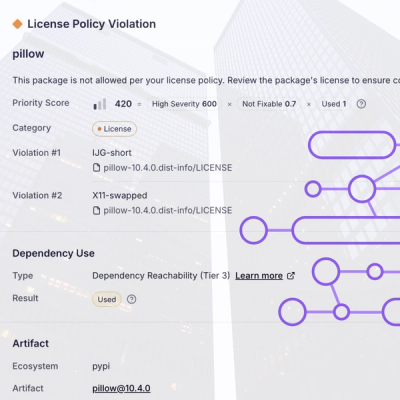
Research
/Security News
Critical Vulnerability in NestJS Devtools: Localhost RCE via Sandbox Escape
A flawed sandbox in @nestjs/devtools-integration lets attackers run code on your machine via CSRF, leading to full Remote Code Execution (RCE).
react-step-range-slider
Advanced tools
Use this component like a range input with dynamic steps. Fully responsive and supports touch.
$ npm install react-step-range-slider --save

Usage:
import StepRangeSlider from 'react-step-range-slider'
const range = [
{ value: 0, step: 1 }, // acts as min value
{ value: 20, step: 5 },
{ value: 50, step: 10 },
{ value: 100, step: 50 },
{ value: 500 } // acts as max value
]
<StepRangeSlider
value={5}
range={range}
onChange={value => console.log(value)}
/>
range : arrayConfigures min and max values as well as the step for each value breakpoint. Required.
value : numberDetermines the position of the drag handle. Should be divisible by the step at the appropriate value breakpoint.
defaultValue : numberDetermines initial position of the drag handle.
onChange : functionCallback called on value change.
onChangeComplete : functionCallback called on drag end or on click.
disabled : boolPrevent value change.
className : stringProvide your own class for the outer element.
children : anyDisplay whatever you want in the drag tooltip. Defaults to a tooltip.
stepDown()Decrements the step of the slider by the specified number.
stepUp()Increments the step of the slider by the specified number.
FAQs
A range slider input for React
We found that react-step-range-slider demonstrated a not healthy version release cadence and project activity because the last version was released a year ago. It has 1 open source maintainer collaborating on the project.
Did you know?

Socket for GitHub automatically highlights issues in each pull request and monitors the health of all your open source dependencies. Discover the contents of your packages and block harmful activity before you install or update your dependencies.

Research
/Security News
A flawed sandbox in @nestjs/devtools-integration lets attackers run code on your machine via CSRF, leading to full Remote Code Execution (RCE).

Product
Customize license detection with Socket’s new license overlays: gain control, reduce noise, and handle edge cases with precision.

Product
Socket now supports Rust and Cargo, offering package search for all users and experimental SBOM generation for enterprise projects.